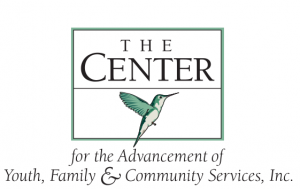Tír gan teanga, Tír gan anam. Padraig Pearse
A country without a language is a country without a soul.
Gaelic Saying
Stories are formed from words, which are the building blocks of language. Each letter, each word is nuanced by the context and culture that breathes life into its language.
Stories make present what was in the past in ways that can help us survive into the future. When the Jews began to settle in Palestine at the end of the 1800’s one of the first things they did was establish schools to teach Hebrew. Reading the original text of our ancestors was central to a deeper sense of connection with the land they were re-entering and come to know their place in it. Today all children enrolled in Jewish education learn Hebrew. It is one of the central reasons this culture has survived against tremendous odds for over 5,000 years.
All over the world languages are dying. This has a profound impact on indigenous communities and all of their relations. Passed on from generation to generation stories tell us where we have been and help us set a course for our future. I am who I am because of the stories of my ancestors that I live and tell. You are who you are in this same way. Because we have been touched by other people’s stories we are the collected works of the human experience. We are each a library of life.
“Stories tell me not only who I am but also who you are, and what we are together. In fact, without you and your story I cannot know my story and myself. No one’s story exists alone. Each is tangled up in countless others. Pull a thread in my story and feel the tremor half a world and two millennia away,” (Taylor, D. 1996, P. 6).
When one language dies we are all impacted. A piece of what we could know and become has been lost.
Richard Forty writes that in the past “differences in cultural lives became hardened through the peculiarities of rites and language. The cultural diversity of humankind arose during 10,000 years or so of tribal differentiation. …In all peoples, music and dance enhanced rituals, and such celebrations of rituals served to unite societies before the complexity of written law.”
“Curiously, the neural ‘wiring’ for music apparently runs independently through the brain from other cognitive functions…. It seems rather wonderful that a corollary of humanity is the urge to sing.”
“Rites preceded rights. Rituals connected with initiation into adulthood, with hunting, seclusion and the transmission of essential knowledge celebrated with village feast days appear to be universal among living tribes and often acquired religious significance,” (Forty 1998)
Yours, Mine & Ours
You have your ancestors, customs, language, stories and rituals that need to be remembered and honored. And I have mine. What can become our language, stories, and rituals that we can sing and dance together which serves the survival of our ancestors, all our relations and ourselves?
Walking, I am listening to a deeper way.
Suddenly all my ancestors are behind me.
Be still, they say. Watch and listen.
You are the result of the love of thousands.
Linda Hogan
Native American Writer
Love Embrace of The Universe, The Earth (Mexico), Diego, Me and Senor Xolotl – Frida Kahlo, 1949.
One central purpose of rituals in general and rites of passage specifically served survival in a reciprocity between the individual, their community and the survival of all our relations. Formulating a language of ritual together in community-oriented rites of passage can serve to strengthen individual group and cultural identity and resiliency. In reciprocity this serves to strengthen and bring unity to the community and health to all our relations. When individuals are initiated through their ancestral language and symbols, within their culture and place, their identity is forged and tempered – strengthened by the natural rhythms and values of their ancestors.
What language can help stories emerge that connects us rather than separate us? What are the songs we can sing and music we can dance to that could bring us together in our collective humanity? If rites precede rights then what elements of rites do we all have in common that can help secular rites emerge, in balance and harmony with our cultural rites that respect, affirm and celebrate our diversity, each other’s ancestors and help us to find strength in our diversity?
We are at a time of great transition. How can we honor and celebrate our “tribal differences,” while at the same time help a new story emerge that becomes our story, with a common language that links us together in our basic human needs and celebrations that unite us?
Let us sing & dance together in Peace,
For more on stories for our time visit: “What’s the Story.”
__________________________________________
Forty, Richard. Life: A Natural History of the First Four Billion Years of Life on Earth. New York: Alfred A. Knopf, 1998.
Taylor, Daniel. The healing power of stories: Creating yourself through the stories of your life. New York: Doubleday, 1996.
Join the conversation by emailing your thoughts, comments or questions to thecenter@rope.org – or join the conversation on the ROPE® Facebook page.
Thanks to my ancestors and Dr. William Lavine for once again offering evolutionary evidence of the importance of rituals, Diarmiud Hanafin for friendship and keen insights on the nature of humans accrued from years of hospitality as the proprietor of Irish Pubs, and Louann Virgil, Marc Goldstein, Brian Evarts, Kehaulani Kekoa and Lori Antonacci for continued use of stimulating language.
©David Blumenkrantz, 2014. No permission is granted to copy, extract language or design principles, without appropriate reference and citation.
Written By StoneROPE119
Language & Legacy© was originally published @ Paradigm Shift and has been syndicated with permission.
Sources:
Our authors want to hear from you! Click to leave a comment
Related Posts





